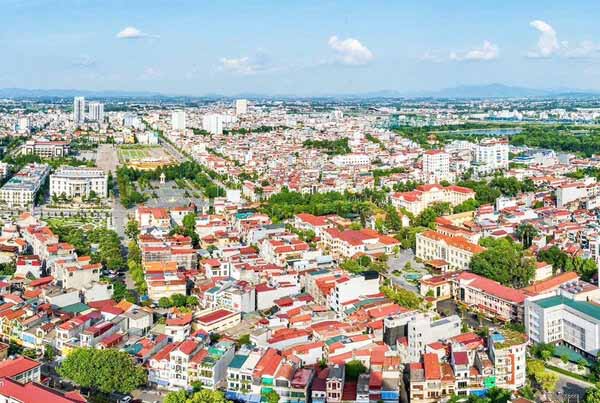At the press conference on the results of the implementation of the socio -economic tasks of Bac Giang Province in the first quarter of 2025 on the morning of April 11, Mr. Nguyen Van Phuong - Deputy Director of the Department of Home Affairs of Bac Giang Province said that the Standing Committee of Bac Giang and Bac Ninh Provincial Party Committee met about the merger of the two provinces.
The Standing Committees of the Bac Giang and Bac Ninh Provincial Party Committees have agreed to establish working groups to serve the implementation of the merger of the two provinces, including reviewing policies, facilities, and officials of the two provinces.
Accordingly, the deadline for submitting documents on the arrangement of provincial administrative units is before May 1, and the time to collect voters' opinions is April 20.
Bac Ninh province has an area of 822.7 km2 - the smallest in the country, located at the northern gateway of the capital Hanoi, in the economic growth triangle of Hanoi - Hai Phong - Quang Ninh.
According to the 2022 statistics, Bac Ninh's population is 1,488,250 people, of which men account for 49.2%, women 50.8%.
The province has 8 administrative units, including: Bac Ninh city, Tu Son city, Thuan Thanh town, Que Vo town and 4 districts: Tien Du, Yen Phong, Gia Binh and Luong Tai with 121 commune-level administrative units, including 66 communes, 50 wards and 5 towns.
Bac Ninh is a province with important traffic routes running through, connecting the province with the economic, trade and cultural centers of the North.
National Highway 1A connects Hanoi - Bac Ninh - Lang Son; National Highway 18 expressway connects Noi Bai - Bac Ninh - Ha Long International Airport; National Highway 38 connects Bac Ninh - Hai Duong - Hai Phong; the railway axis across Vietnam to Lang Son and China.
The network of waterways of Cau River, Duong River, and Thai Binh River flowing into the East Sea.

Bac Giang has a significantly larger area, about 3,825 km2.
The province has 10 district-level administrative units including: Bac Giang city, Viet Yen town, Chu town and 7 districts, including 5 mountainous districts ( Luc Ngan, Luc Nam, Yen The, Lang Giang, Tan Yen), 1 mountainous district (Son Dong) and 3 districts, midland and plain towns (Hiep Hoa, Viet Yen, Chu).
Bac Giang's population is about 2 million people, with a population density of 463 people/km2, 1.5 times higher than the national average. The urbanization rate as of 2023 is 23.7%.
Bac Giang is the 11th most populous province in the country and the most populous in the Northern Midlands and Mountains. Bac Giang has young human resources. The population of working-age people is over 1.1 million, trained workers account for over 76% of the working-age force.
There are 347 km of rivers and streams in the province, of which the three major rivers are the Luc Nam River, the Thuong River and the Cau River. In addition to rivers and streams, Bac Giang also has many lakes and lagoons, including Cam Son and Khuon Than lakes.
Cam Son Lake is located in an area bordering Lang Son province, 30 km long, 7 km wide at the widest point and 200 m narrowest at the narrowest point. Cam Son Lake has a water surface area of 2,600 hectares, and can reach 3,000 hectares during the rainy season. Khuon Than Lake has a surface area of 240 hectares and the lake has 5 hills and islands covered by pine forests.
Previously, in November 1996, the 10th session of the 9th National Assembly issued a Resolution to separate Ha Bac province to re-establish Bac Giang and Bac Ninh provinces. The two newly re-established provinces officially operated from January 1, 1997.











